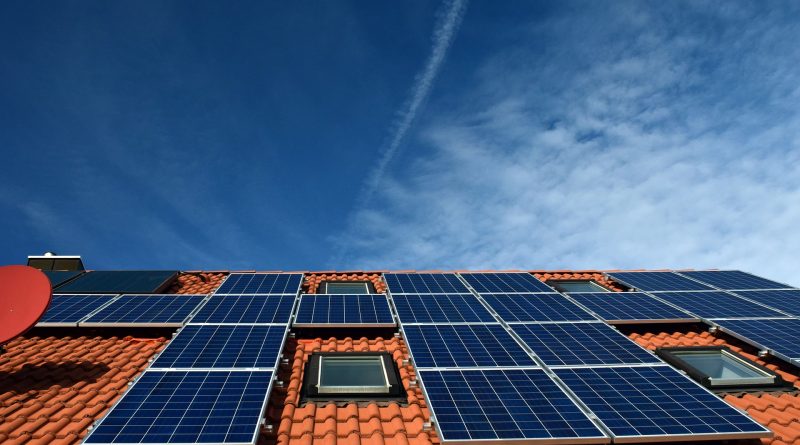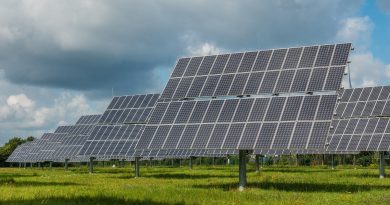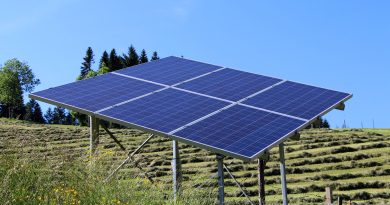Grid Connected Solar Rooftop System: Explained
In recent years, there has been a growing interest in renewable energy sources and their potential to combat climate change. Solar power, in particular, has gained widespread popularity due to its efficiency and sustainability. One noteworthy innovation in the solar energy sector is the grid-connected solar rooftop system. This blog aims to provide a comprehensive understanding of this revolutionary technology, its benefits, and how it works.
What Is a Grid-Connected Solar Rooftop System?
A grid-connected solar rooftop system, also known as a grid-tied solar system, is a setup that allows you to generate electricity using solar panels on your rooftop and deliver any excess power back to the grid. This system operates in conjunction with the local utility grid, providing both environmental and financial benefits to homeowners and businesses.
How Does a Grid-Connected Solar Rooftop System Work?
The key components of a grid-connected solar rooftop system include solar panels, an inverter, a bi-directional electric meter, and the local utility grid. Let’s delve into how these elements work together to harness the power of the sun efficiently.
Firstly, solar panels are installed on the rooftop to capture sunlight. These panels consist of multiple photovoltaic (PV) cells, which convert sunlight into direct current (DC) electricity. The number of solar panels required depends on the energy consumption of the building and the available rooftop space for installation.
Next, the DC electricity generated by the solar panels is sent to an inverter. The inverter’s primary function is to convert the DC power into alternating current (AC), which is suitable for use in your home or commercial establishment. AC power is the form of electricity used by most appliances and devices.
Once the electricity has been converted to AC, it can be used to power your electrical appliances and lighting. Any excess electricity not consumed by your premises is automatically fed back into the utility grid through the bi-directional electric meter. This meter keeps track of the energy you produce and consume, allowing for accurate billing and crediting purposes.
During periods of low sunlight or high energy demand, such as at night or on cloudy days, your electricity supply seamlessly switches back to the utility grid. This integration ensures a continuous and reliable power supply without any interruptions.
Benefits of a Grid-Connected Solar Rooftop System
Grid-connected solar rooftop systems offer numerous advantages for both residential and commercial users. Let’s explore some of the compelling benefits that have made this alternative energy solution so popular.
1. Cost Savings: Investing in a grid-connected solar rooftop system allows you to significantly reduce or even eliminate your electric bill. By generating your own electricity, you rely less on the utility grid and draw less power from it, resulting in substantial savings over the system’s lifespan.
2. Environmental Impact: Solar energy is a clean and renewable energy source that produces no greenhouse gas emissions during operation. By choosing a grid-connected solar rooftop system, you actively contribute to reducing carbon footprint and combating climate change.
3. Net Metering: The concept of net metering is a significant advantage of grid-connected solar rooftops. When you produce excess electricity, it is automatically fed back into the grid, and you receive credits from the utility company. These credits can then be utilized when your solar energy production is insufficient, such as during nighttime or cloudy days, offsetting your energy costs further.
4. Low Maintenance: Once installed, grid-connected solar rooftop systems require minimal maintenance. Solar panels have no moving parts and are designed to withstand harsh weather conditions, making them highly durable and long-lasting. Periodic cleaning to remove dust and debris is typically sufficient to maintain their efficiency.
5. Economic Incentives: Many governments and local authorities offer attractive financial incentives to promote the adoption of solar energy. These incentives may include tax credits, grants, or favorable feed-in tariffs, further reducing the overall cost of installing a grid-connected solar rooftop system.
Conclusion
A grid-connected solar rooftop system is a sustainable and financially rewarding way to harness the power of the sun. By seamlessly integrating with the local utility grid, it allows users to generate clean energy and reduce their electricity bills. The benefits, such as cost savings, environmental impact, and net metering, make it an attractive option for homeowners and businesses alike. As solar technology continues to advance, it is clear that grid-connected solar rooftop systems will play a vital role in shaping the future of energy consumption around the world.
Frequently Asked Questions
It’s a solar power system connected to the utility grid, allowing for energy exchange and reduced dependence on traditional power sources.
Solar panels on the rooftop generate electricity, and excess energy is sent back to the grid, earning credits or reducing electricity bills.
Benefits include cost savings, reduced environmental impact, and the potential to earn credits through net metering.
In most cases, yes. Consult with a professional to assess your roof’s suitability and ensure it meets local regulations.
No, these systems are designed to remain connected to the grid for stability. Consider off-grid systems if total independence is desired.
Yes, these systems are scalable and can be adapted for commercial use, offering businesses cost savings and sustainability benefits.
Net metering allows users to receive credits for excess energy sent to the grid, balancing out energy consumption and reducing overall costs.
Installation time varies, but it typically takes a few days to a couple of weeks, depending on system size and complexity.
Regular inspection and cleaning are recommended. However, grid-connected systems generally require less maintenance compared to off-grid setups.
Check with local authorities and utility providers for potential incentives, rebates, or tax credits available for adopting solar energy systems.




